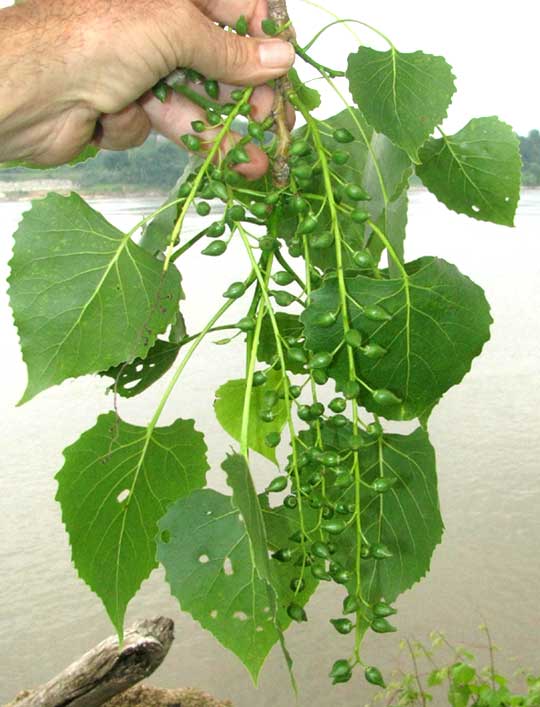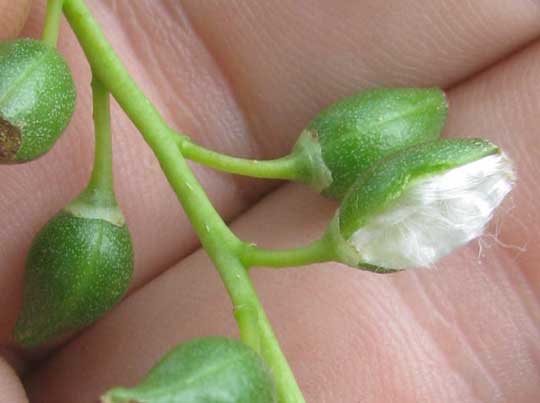Excerpts from Jim Conrad's
Naturalist Newsletter
from the April 15, 2012 Newsletter issued from the woods of the Loess Hill Region a few miles east of Natchez, Mississippi, USA
EASTERN COTTONWOODS RELEASING FUZZ
Karen needed to visit Vidalia, Louisiana across the river from Natchez, so while she did her chores there I wandered along the Mississippi River's muddy banks. One interesting discovery was that some of the 60-ft-tall (18m) Eastern Cottonwoods, POPULUS DELTOIDES, along the banks already were releasing "cotton" -- their tiny seeds attached to tufts of white, cottony hairs that drift away on the slightest breeze.
Actually all the seed-releasing fruits I could find were those on branches damaged by insects or the wind, where capsules were opening earlier than normal, the way a dying fruit tree often produces early fruit in order to save what it can. However, it's still true that cottonwood fuzz was in the air, weeks earlier than normal.
Cottonwoods are members of the Willow Family, the Salicaceae, in which trees are predominately or completely male or female. You can see long, healthy catkins of capsules -- from a female tree of course -- with the muddy Mississippi River in the background below:

Some healthy capsules with one opened to show the cottony hairs inside are shown below:

One reason Eastern Cottonwoods prosper along river banks is that its seeds can germinate and root on bare soil in full sunlight. In fact, the seeds require those conditions for successful germination, though transplanted saplings grow robustly when planted away from river banks.
Another adaptation is that Eastern Cottonwood wood is soft and brittle, so the flooding river's powerful currents, instead of uprooting whole trees and killing them, may shatter them. Then the trees quickly sprout from their bases, plus their broken-off twigs carried downstream can root and become new, fast-growing trees. In the US Southeast, cottonwood plantations produce fiber for pulp used to make paper, as well as wood for biomass energy. In such plantations, planted rootless cuttings have up to a 90% survival rate.